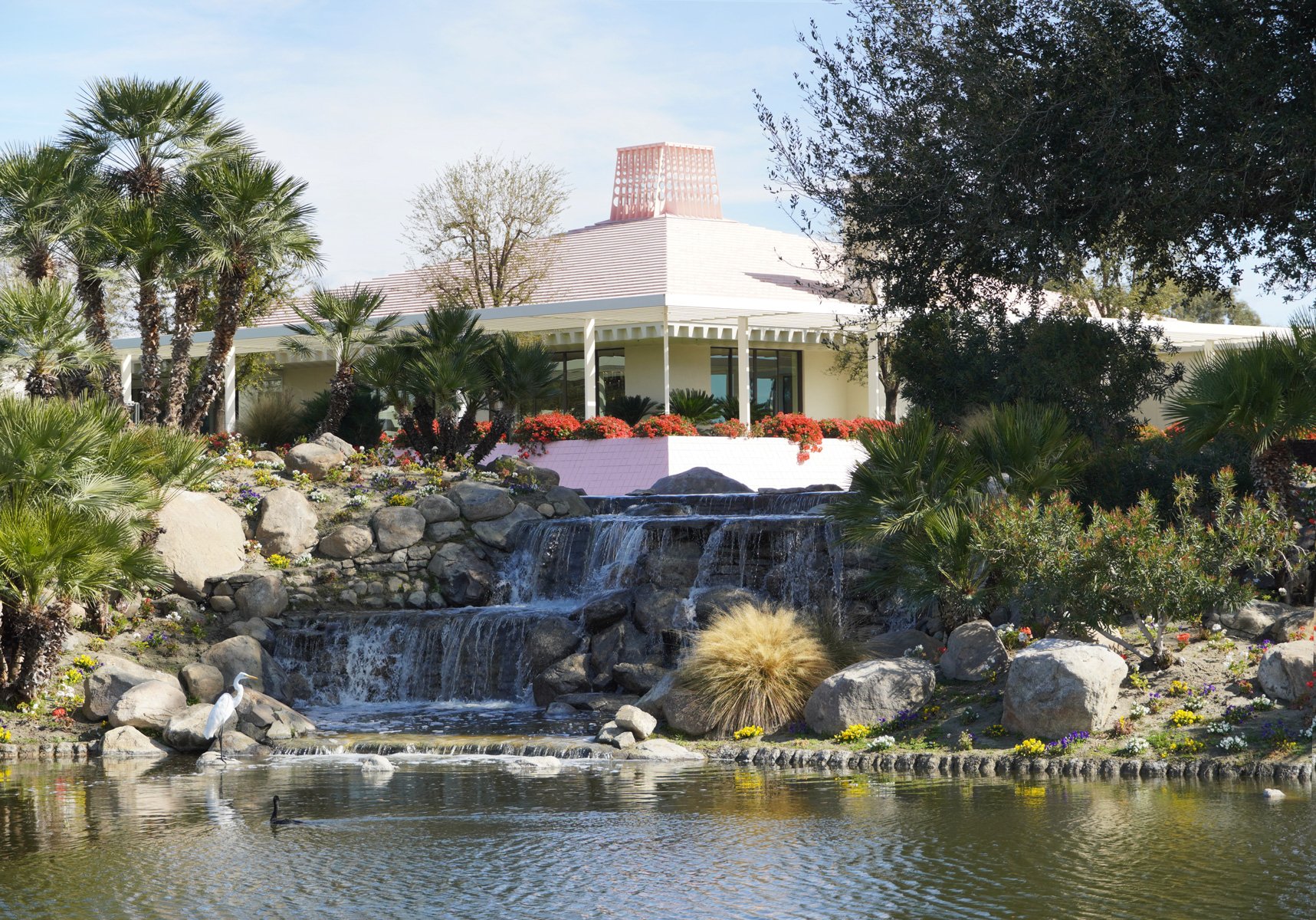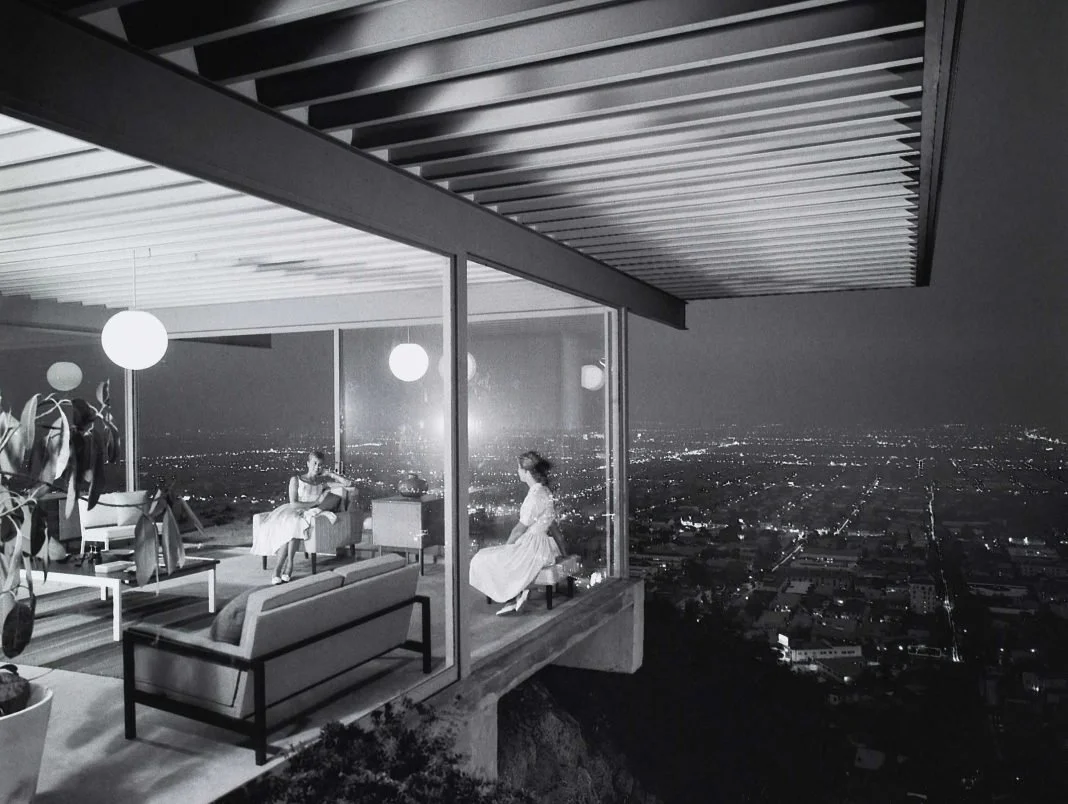Ten Things You Should Know About the Case Study House Program
1. What was the case study house program?
The Case Study House Program was an experimental program set up by John Entenza through Arts and Architecture Magazine. The program facilitated the design, construction, and publishing of modern single-family homes. The goal was to feature each home in the magazine with photographs and articles about the homes. Each of the houses was to be constructed with industrial materials and techniques that could help solve the housing needs after WWII and illustrate a new way of living.
2. Why is the case study house program important?
The program was important because it would be the platform that would produce numerous icons of modern residential architecture in Southern California. Without the Case Study House Program, many of these homes would not exist today. Some of the more well-known homes include Case Study House #22 (Stahl House), Case Study House #21 (Bailey House), and the Eames House (Case Study House #8). These homes helped California develop an architectural identity and allowed Los Angeles to make a significant contribution to the history of modern architecture.
3. What were the goals of the case study house program?
Solve The housing Shortage after WWII
At the close of World War II, nearly 7.6 million soldiers were sent home from abroad. At the time, there was not enough housing to meet the need of the returning soldiers. This was both a challenge and an opportunity that the Case Study House program attempted to solve. Many other developers and home builders would recognize this opportunity and offer different housing solutions. However, the Case Study House Program was unique because it considered architectural aesthetics and new technologies.
Build homes quickly and economically using modern industrialized materials and techniques
The home-building industry had been moving at a snail’s pace during the war. Before the war, there was minimal traction due to the Great Depression, effectively putting the industry on hold for several decades. It was a challenging time to be an architect or home builder.
Victory in WWII catalyzed a shift in society. It generated a new level of optimism, opportunity, and vibrancy. During the war, many new technologies and materials were created to help aid in the war effort. After the war, manufacturers, builders, architects, and engineers were eager to implement these advances into the public markets.
Returning soldiers would gain employment as tradesmen, contractors, architects, and engineers to meet the massive demand for the production of single-family homes. Architecture in America would begin to flourish and enter a stage of unprecedented growth.
Utilize a philosophy and architectural aesthetic language of modernism.
Many of the young architects involved in the program believed that through their designs, they would catalyze a large-scale social change. They romanticized that their designs would bring good modern design to the masses. They could provide the working class with high-design architecture previously only available to the financially well-off.
Publicize the homes in Arts and Architecture Magazine to bring modern residential architecture to the masses and market the California post war lifestyle.
The publication and marketing of the homes should not be overlooked. This component of the Case Study House program was perhaps the most effective mechanism in disseminating and popularizing the image of a new Southern California way of living. Families all over the nation would see images of the post-war family living in their modern homes, sipping cocktails, and enjoying the sun. These simple images often resulted in the uprooting of their lives and resettling to Southern California. This magazine, among several others, would play a significant role in the population growth of Southern California during this time.
4. John Entenza - Orchestrator of the Case Study House Program
John Entenza was a young man, originally from Michigan, brought up in a well-off family. He was educated and seemed to have an affinity for art and architecture. His father-in-law’s partner commissioned a house by Harwell Hamilton Harris. Harris had worked in the offices of Richard Neutra. When the time came to build his own home, Entenza commissioned Harris, who opened his eyes further to the world of architecture.
Around the same time, in 1929, he started work at California Arts and Architecture Magazine. At the time, the magazine was small and unknown. Entenza would purchase the magazine in 1938 and take on the title as Editor in Chieoftwo years later. He would ween out the eclectic work in the magazine, focusing on modern design, and remove the word “California” from the title to eliminate regional bias. Entenza would remain editor of Arts and Architecture magazine for thirty-seven years.
His goal was to change the magazine’s direction and bring modern architecture to the masses. Entenza took it upon himself to help several young modern architects through his publication. For a young architect to be published in Arts and Architects was a huge professional accomplishment and a mark of credibility.
“ A magazine as flat as a tortilla and as sleek as a Bugatti with little advertising and no financial backing became the greatest force in the dissemination of information, architectural and cultural, about California.”
5. The Architects who Participated
After the war, Entenza and many others feared that architecture would fall back into its “eclectic rut” of the past. Entenza wanted to provide a platform for young talented architects willing and interested in experimenting with innovative technologies. He would show their modern work in context with people, furniture, and all the accessories of a standard home, making the sleek lines of modern architecture more palatable for the public.
In total, there would be thirty-six residences designed. The architects who participated in the program were hand selected by John Entenza. Therefore, they represent his personal preferences rather than a comprehensive cross-section of architects practicing in California at the time. Among the thirty-six designs, only a handful were built. The most notable of the built structures were completed by Charles and Ray Eames, Craig Ellwood, Pierre Koenig, and Raphael Soriano.
Notable California Architects such as R.M. Schindler, John Lautner, Harwell Harris, Gregory Ain, Gordon Drake, and Carl Maston were not selected to participate in the program. Although undoubtedly worthy, these architects and their projects would not benefit from the widespread exposure of publication in the Arts and Architecture Magazine.
6. Why Los Angeles?
Many soldiers passed through southern California or were stationed here during the war years. They got a brief taste of the area’s weather and lifestyle, causing many to return after the war. Roughly one million soldiers would move to Los Angeles in the post-war years, followed by an additional two million in the 1950s. Los Angeles was the land of opportunity, new beginnings, and a leisure lifestyle fueled by the film, television, and marketing industry. Marketing in magazines was one of the significant attractors to the area. Spreads in magazines such as Sunset and Home & Garden portrayed healthy, wholesome young families enjoying the southern California lifestyle in their new modern homes.
“Los Angeles was primed for postwar prosperity.”
7. ECONOMICS OF THE CASE STUDY PROGRAM
When building product suppliers and manufacturers got wind that the Case Study Houses would be widely published and toured, they were eager to donate their products. These donations would help the patrons of the homes and reduce the construction cost significantly, often making the homes financially feasible for the owners. The articles in Arts and Architecture magazine would include photographs and a list of building products and materials used on the project.
Because the product manufacturers absorbed many construction costs, the homeowners were much more open to experimentation and an open-minded approach to their projects. This allowed more flexibility and freedom for the architects.
8. JULIUS SHULMAN AND THE CASE STUDY HOUSE PROGRAM
Before Entenza was hired at Arts and Architecture, a young photographer named Julius Schulman worked for the publication. When Entenza took over, Schulman would work closely with the advertising manager and team working on the Case Study House Program. He recalls the budget for the program being so low that there was no money to spend photographing the house. When a house was photographed, it was always run by Mr. Entenza, and he would make the ultimate decision if the home were to be published in the magazine.
Julius Schulman would go on to create some of the most iconic photographs that define modern architecture today. Photographs such as the evening shot of Koenig’s Case Study House 21 and Richard Neutra’s Kauffmann house are perhaps the most well-known architectural photographs in the history of modern architecture.
9. CASE STUDY HOUSE 22 - Icon of the Case Study House Program
Reference to the Case Study House Program will inevitably bring up Julius Shulman’s photograph of Case Study House 22. designed by Pierre Koenig. Photographs of the home published in the magazine exemplified Southern California’s post-war modern living. The images showed two young women sitting in the living room, cantilevered out over the hill, with the city lights of Los Angeles in the background. This single photograph exemplifies so many societal aspirations of the time.
The image has become not only an icon of the Case Study House Program but also an icon of Los Angeles modern architecture. To learn more about the Stahl House Case Study House 21, check out our article: NINE THINGS YOU SHOULD KNOW ABOUT THE STAHL HOUSE – CASE STUDY HOUSE 22.
10. RESULT OF THE PROGRAM
The Case Study House Program was successful on many levels. However, the original goal of providing economical housing using industrialized materials to the masses fell short. The steel-framed single-family home became less ubiquitous than anticipated. Large developers and custom home builders would often revert to wood-framed structures. As inflation grew, prices for single-family homes soared, making the original vision to bring economically priced modern design to the masses only an idealized wish.
In the 1960’s nearly 30,000 people settled in Los Angeles each month. Costs for land and housing continued to increase, making lots for potential case study houses financially infeasible and challenging to acquire. Because of the ever-increasing demand for housing, the emphasis on superior design faded. Due to the large demand, developers with half-baked floorplans did not need exceptional design to sell their homes. Unfortunately, the interest in the program would dissipate. Interest in new housing types was developing, with interest in the typical two-bedroom single-family home seemingly becoming a fad of the past.
Today the Case Study Houses sell for millions of dollars, an ironic reality compared to the original intent. I have been fortunate to tour many of the houses and document their detailing, materials and plans. I am amazed at the precision, detailing, and quality of design in these homes. They are indeed pieces of art. The passion, optimism, and love injected into these structures become apparent as you tour the homes. If you are interested in learning more about a particular Case Study House, do not hesitate to reach us at info@rostarchitects.com.
Please let us know if you notice any errors or inconsistencies in this article. We attempt to provide the most historically accurate information possible.
References:
Hines, Thomas S. Architecture of the Sun: Los Angeles Modernism, 1900-1970. Rizzoli International, 2010.
McCoy, Esther. Five California Architects. Greenwood, 1975
McCoy, Esther. Piecing Together Los Angeles. An Esther McCoy Reader. Writing Home 2012 Susan Morgan
Stahl, Bruce, et al. The Stahl House: The Making of a Modernist Icon. Chronicle Chroma, 2021.


















Principal and Architect of ROST Architects, Mitchell Rocheleau, discusses the significance of The Grand Louvre designed by Architect I.M. Pei, the history of the Louvre, design process, design theory and ideas behind the project.